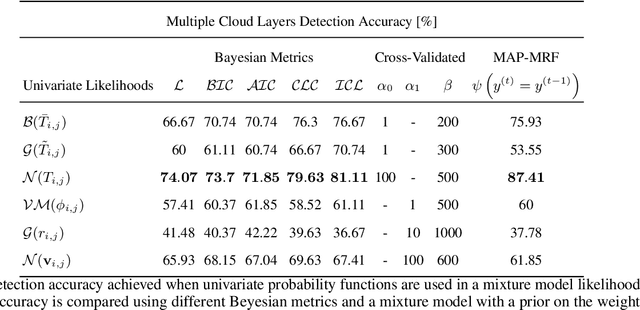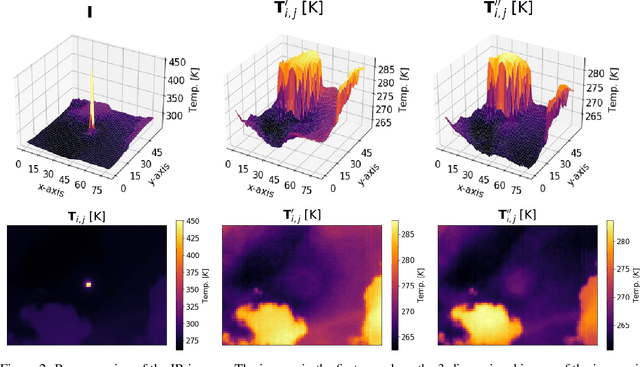Detection of Clouds in Multiple Wind Velocity Fields using Ground-based Infrared Sky Images
Paper and Code
Jun 03, 2021



Horizontal atmospheric wind shear causes wind velocity fields to have different directions and speeds. In images of clouds acquired using ground-based sky imagers, clouds may be moving in different wind layers. To increase the performance of an intra-hour global solar irradiance forecasting algorithm, it is important to detect multiple layers of clouds. The information provided by a solar forecasting algorithm is necessary to optimize and schedule the solar generation resources and storage devices in a smart grid. This investigation studies the performance of unsupervised learning techniques when detecting the number of cloud layers in infrared sky images. The images are acquired using an innovative infrared sky imager mounted on a solar tracker. Different mixture models are used to infer the distribution of the cloud features. The optimal decision criterion to find the number of clusters in the mixture models is analyzed and compared between different Bayesian metrics and a sequential hidden Markov model. The motion vectors are computed using a weighted implementation of the Lucas-Kanade algorithm. The correlations between the cloud velocity vectors and temperatures are analyzed to find the method that leads to the most accurate results. We have found that the sequential hidden Markov model outperformed the detection accuracy of the Bayesian metrics.
 Add to Chrome
Add to Chrome Add to Firefox
Add to Firefox Add to Edge
Add to Edge